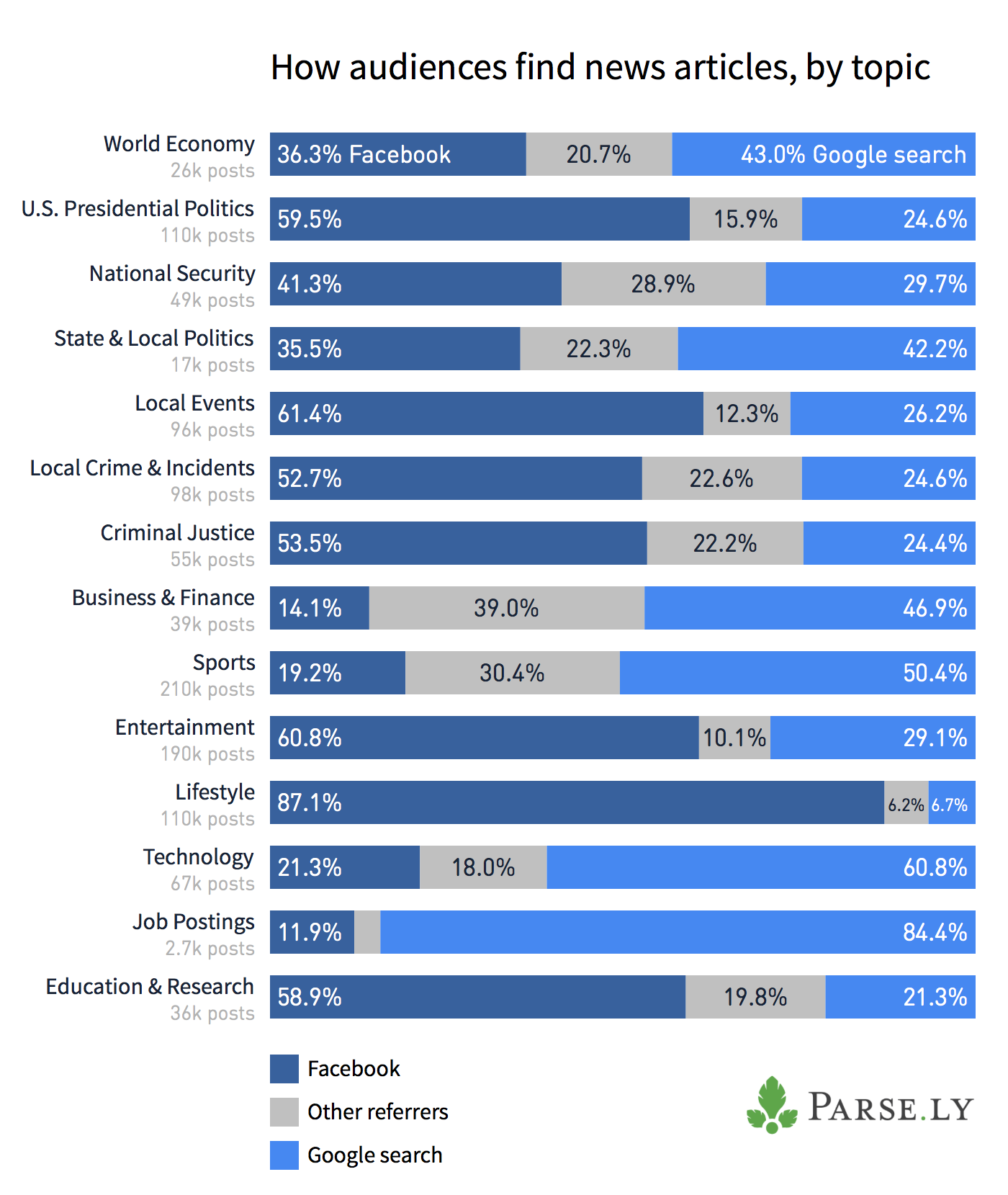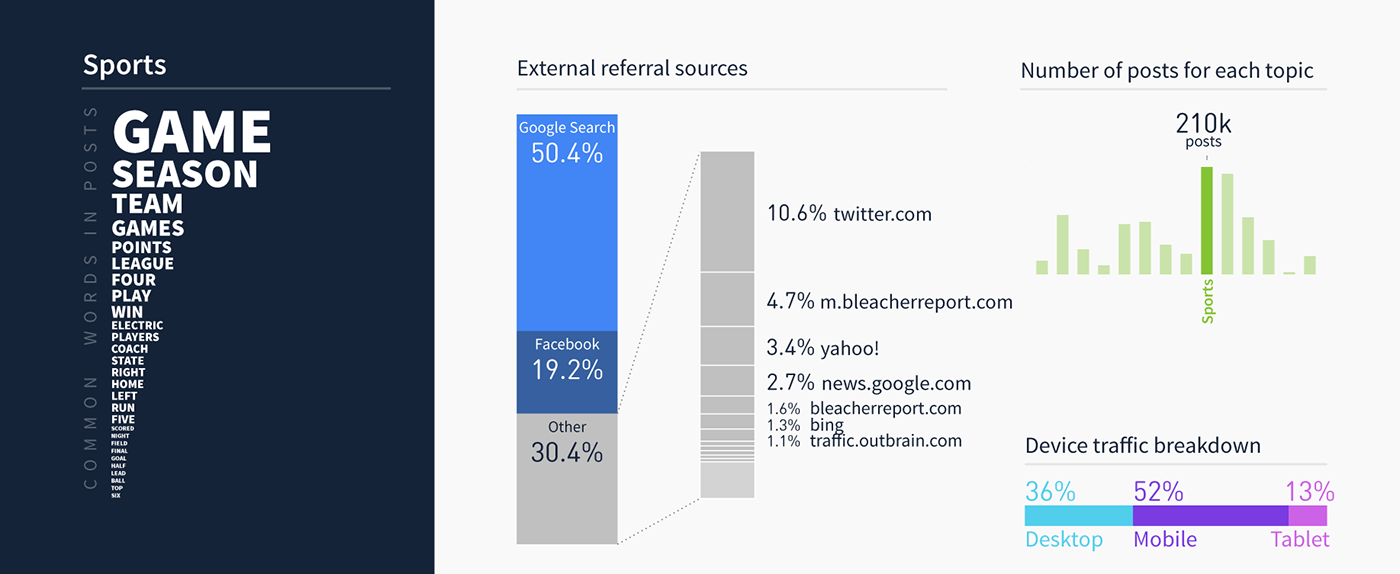Lifestyle Audiences Live on Facebook, Technology Readers Still Want Google Search

In 2016, on average, 40% of external referrers to the Parse.ly network of sites found the content via Facebook, 35% came from Google search, and the duopoly left the rest of the internet (including Google News) with a mere 25% of traffic referrals.
The quick and dominant rise of Facebook to media distribution powerhouse was the focus of urgent and in-depth research from The Tow Center, Reuters Institute for the Study of Journalism, and Pew Research Center.
Our 2016 data analysis showed, however, that if you use Facebook news feeds alone to judge what types of news people consume, you’ll end up with a distorted picture. When on Facebook, you’ll see readers especially engaged with articles on entertainment, lifestyle, local events, and politics. Articles on business, world economics, and sports also attract readers, but mostly through Google and other long-tail referrers.
What the data says about how audiences find different topics online
For our 2016 Authority Report, we wanted to move past aggregate platform trends. How does the audience referral network change according to article topic? To answer this question, we examined 10 million articles published in the Parse.ly network during 2016, categorized by topic.
In the 14 topics we examined, external traffic makeup varied significantly. Articles included in the “lifestyle” topic receive 87 percent of their external traffic from Facebook, whereas Google search generates 60 percent for articles in “technology.” Traffic from Twitter can make up from below 1 percent to 10 percent depending on the the topic.

Topics More Popular from Google Search
In 2016, the leading category of Google Search referral went to Job Postings, with 84.4% of external traffic referrals, though this category also accounted for the least amount of total posts.
Technology articles, Sports, and Business and Finance articles all performed above the Google Search average, at 61 percent, 50 percent and 47 percent respectively. Posts on the World Economy brought in 43 percent of the referrals from Google.
Sports articles also had the highest volume in any post topic category we examined.
Outside the Duopoly: Where Are Audiences Coming from?

The full report breaks down each topic, but shows a wide variety in sources outside the two monoliths.
For sports articles, Twitter made up over 10 percent of the outside traffic referrals, while lifestyle articles received less than 2 percent of their traffic from Twitter. Bleacher Report drove 5 percent of sports articles, while LinkedIn sent almost 5 percent of Business & Finance audiences. Drudge Report sent over 5 percent of traffic to articles about National Security, but less than 2 percent for articles about U.S. Presidential Politics.
Why does this data matter?
Finding the best audience for your work makes the most of the effort you and your team put into creating it. Understanding the nuances in audiences ensures that you consider the potential distribution while creating strategies and content, instead of waiting to find out how it does later.
See all of the data in the full Authority Report.